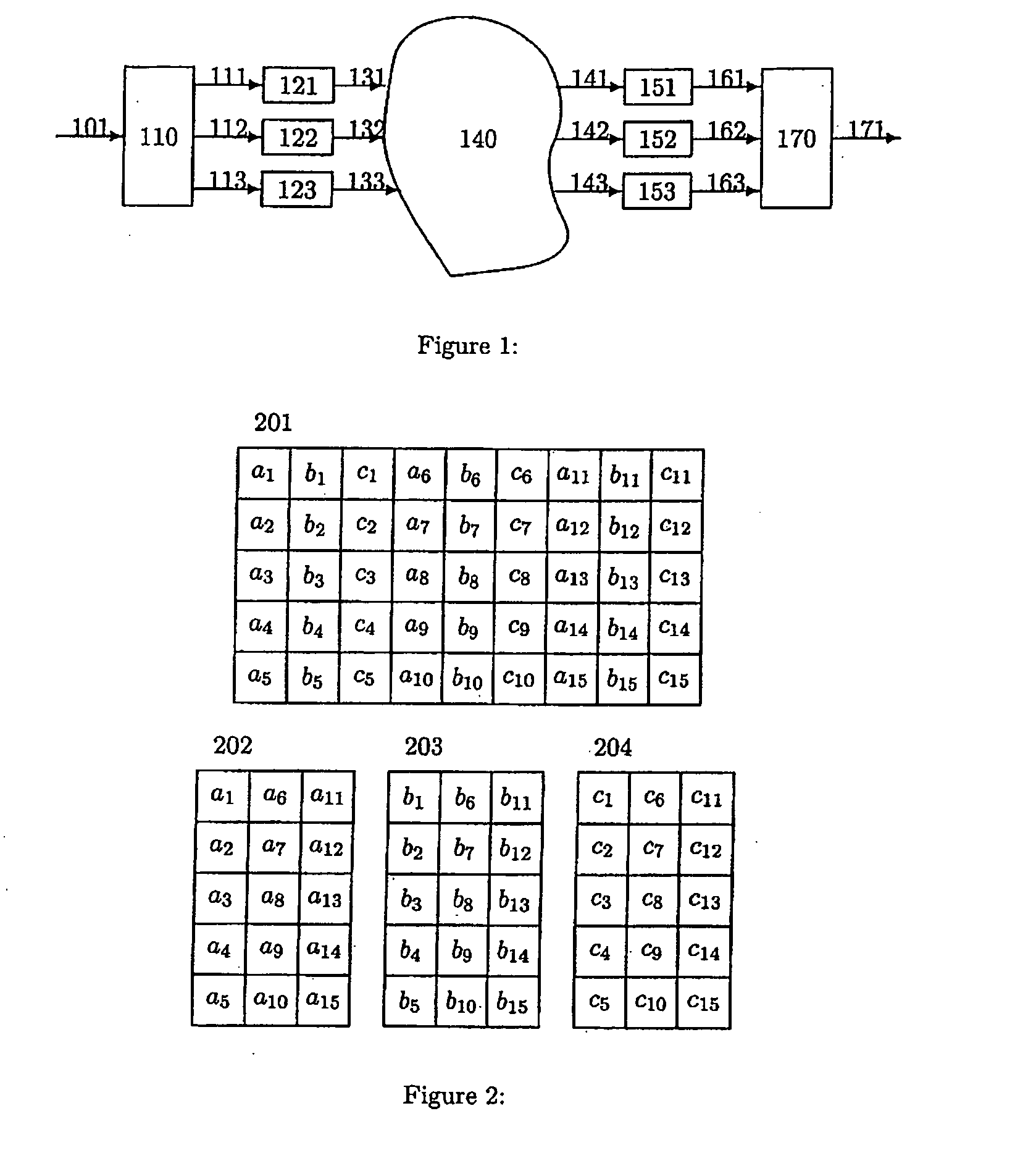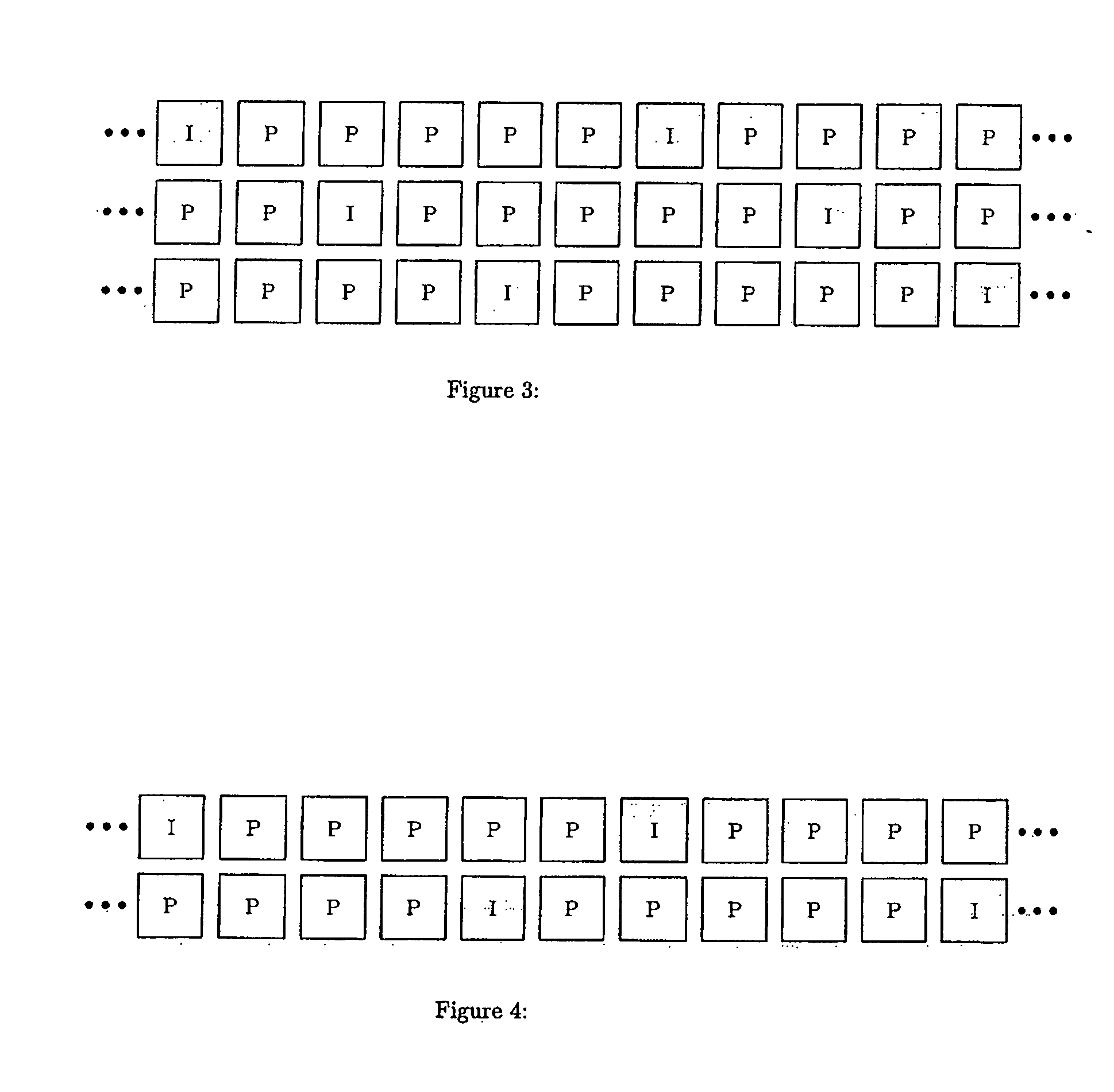Method of coding a video signal
- Summary
- Abstract
- Description
- Claims
- Application Information
AI Technical Summary
Benefits of technology
Problems solved by technology
Method used
Image
Examples
Embodiment Construction
[0024]FIG. 1 schematically shows an exemplifying overall system environment in which the different embodiments of the invention may be included and arranged to operate.
[0025]In FIG. 1 a digitized video signal 101, divided into frames, is input, each frame representing a still image in time.
[0026]In general, to obtain robustness to transmission errors, a video signal can be divided into multiple descriptions. Each description is then encoded in a separate coding unit which is an implementation of an existing standard coder. This implies that there are I-frames and P-frames for each description. In case all descriptions are received at the receiver end, the best quality of video is obtained. In case there are errors in the transmission, affecting a number of descriptions, these descriptions are disregarded until they have been updated by an I-frame. Of course, this has the effect that the quality of the video is reduced temporarily.
[0027]The descriptions in a multiple description vide...
PUM
 Login to View More
Login to View More Abstract
Description
Claims
Application Information
 Login to View More
Login to View More - R&D
- Intellectual Property
- Life Sciences
- Materials
- Tech Scout
- Unparalleled Data Quality
- Higher Quality Content
- 60% Fewer Hallucinations
Browse by: Latest US Patents, China's latest patents, Technical Efficacy Thesaurus, Application Domain, Technology Topic, Popular Technical Reports.
© 2025 PatSnap. All rights reserved.Legal|Privacy policy|Modern Slavery Act Transparency Statement|Sitemap|About US| Contact US: help@patsnap.com



